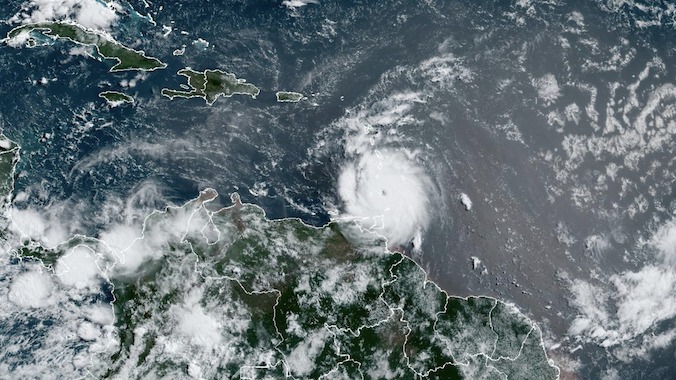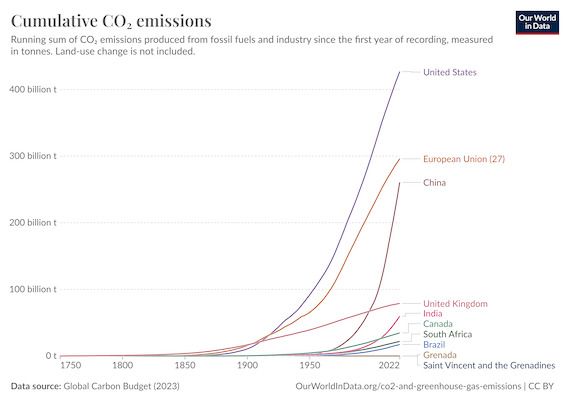Hurricane Beryl Offers ‘Potentially Catastrophic’ Demonstration of Injustice at the Heart of Climate Change
Photo courtesy of NOAA
As of early Monday morning, Hurricane Beryl was poised to churn past the Windward Islands in the Caribbean with sustained wind speeds upwards of 130 miles per hour. The National Hurricane Center called it “an extremely dangerous major hurricane,” with “potentially catastrophic” winds and a “life-threatening storm surge.” It would be tough to find a better example of climate change’s fundamental injustice.
The islands the storm is primarily targeting include St. Vincent and the Grenadines and Grenada. On a chart showing cumulative carbon dioxide emissions since before the industrial revolution, where countries including the U.S., the European Union, China, and the United Kingdom clearly dominate, the Caribbean nations show up as effectively non-existent contributors. Keep removing those big sources, one by one, shrinking the y-axis bit by bit, and the lines for the island nations stay stubbornly at zero. They have, for all intents and purposes, done literally nothing to contribute to the warming planet.

And make no mistake — this pending disaster is very much a climate disaster. Hurricanes have always spun through the Caribbean, but not like this: Beryl is the earliest-forming category 4 storm in recorded history, beating out 2005’s Dennis by more than a week. It intensified more rapidly than any June storm we have witnessed, an increasingly common phenomenon thanks to the off-the-charts heat content of the oceans — though one that so far has been more of an August and September event. Rapidly intensifying cyclones are harder to prepare for, catching many people in their path by surprise even as modeling has made predicting those paths better and better.
Though Beryl is unprecedented for early-season storms, it is not out of line with projections. NOAA and other modelers have predicted 2024 would be an above-average year for hurricanes; warming oceans have yielded an increase in June and even May storms over the last decade; and those oceans have been so hot since last March that the charts seem fundamentally broken. All this is happening thanks to the rich countries of the world, almost entirely, while the least responsible bear the rotten fruit.